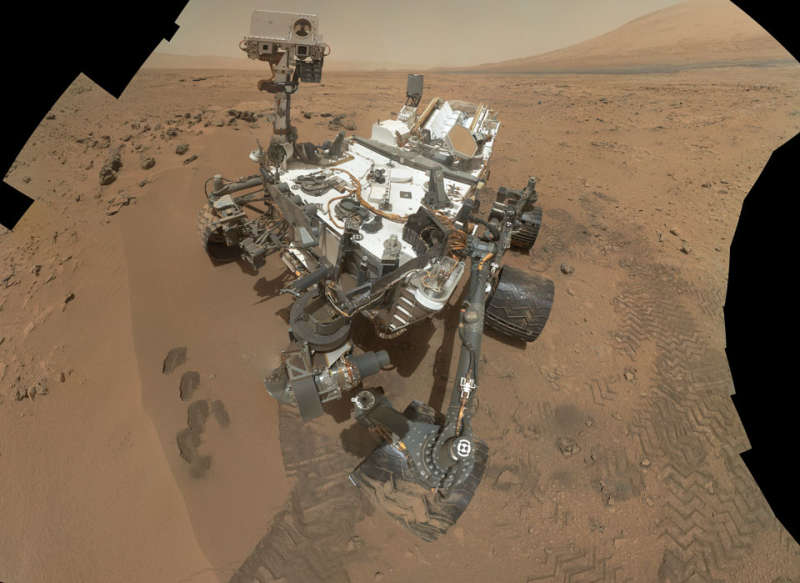Explanation: What's in this smooth soil on Mars? In late October, NASA's robotic Curiosity rover stopped near a place dubbed Rocknest as it continues to explore Gale Crater on Mars. Rocknest is the group of stones seen near the top left of the above image -- just to the left of Curiosity's mast. Of particular interest was the unusually smooth patch of soil named Wind Drift seen to the left of Curiosity, which was likely created by the Martian wind blowing fine particles into Rocknest's wake. The above image shows part of Mt. Sharp in the background to upper right, and, oddly, almost the entire rover itself, digitally reconstructed from 55 frames while digitally removing an extended arm. Curiosity scooped several sand samples from Wind Drift into its Chemistry and Mineralogy Experiment (CheMin) and the Sample Analysis at Mars (SAM) laboratory for a detailed analysis. Preliminary data from the soil indicates a small amount of one-carbon organic material the origin of which it presently unknown. Although the organic signal might be just contaminants from Earth, the exciting possibility that it could be from Mars itself will remain a focus of future exploration and research.
Best of APOD 2012:
Download a free 2013 APOD Calendar
Follow APOD on:
Facebook
(Daily)
(Sky)
(Spanish)
or Google Plus
(Daily)
(River)
1999 2000 2001 2002 2003 2004 2005 2006 2007 2008 2009 2010 2011 2012 2013 2014 2015 2016 2017 2018 2019 2020 2021 2022 2023 2024 2025 |
Yanvar' Fevral' Mart Aprel' Mai Iyun' Iyul' Avgust Sentyabr' Oktyabr' Noyabr' Dekabr' |
NASA Web Site Statements, Warnings, and Disclaimers
NASA Official: Jay Norris. Specific rights apply.
A service of: LHEA at NASA / GSFC
& Michigan Tech. U.
|
Publikacii s klyuchevymi slovami:
Mars - Martian Rover - Mars - marsohod
Publikacii so slovami: Mars - Martian Rover - Mars - marsohod | |
Sm. takzhe:
Vse publikacii na tu zhe temu >> | |
